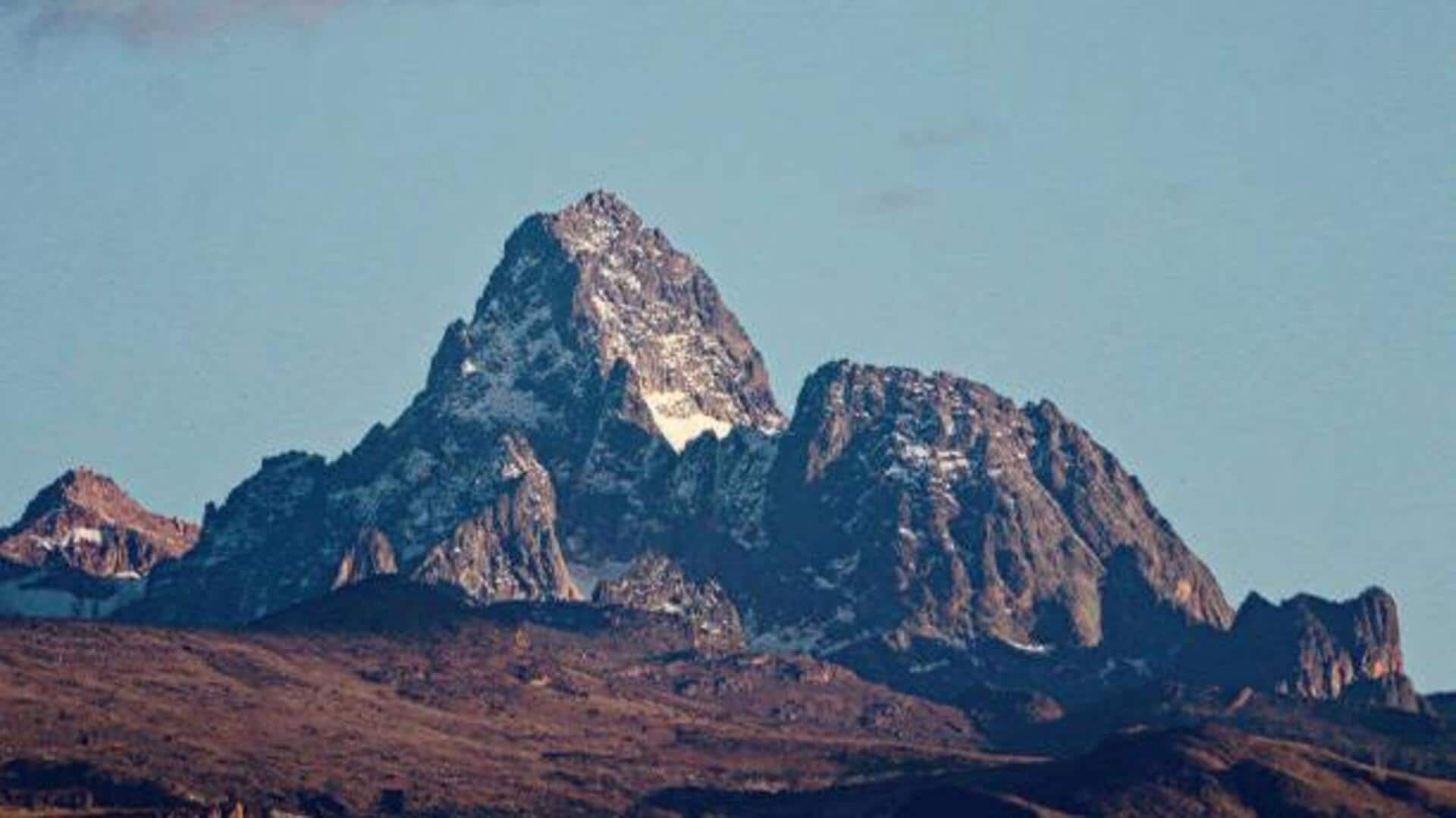
How to plan a hiking trip to Mount Kenya
What's the story
Mount Kenya, Africa's second-highest peak, provides some of the most stunning hiking trails. From lush forests to alpine deserts, the mountain's diverse ecosystems make for an unforgettable experience for hikers. Whether you're a seasoned mountaineer or a casual trekker, Mount Kenya has something for everyone. Here are some of the best hiking routes on this majestic mountain, along with tips to make the most of your adventure.
#1
Sirimon Route: A scenic journey
The Sirimon Route is famous for its scenic beauty and gradual ascent. Starting from the northwest side of the mountain, this trail offers stunning views of the surrounding landscapes. Hikers can enjoy diverse flora and fauna as they make their way through bamboo forests and moorlands. This route is ideal for those who prefer a less strenuous climb with plenty of opportunities to take in the natural beauty.
#2
Chogoria Route: A picturesque ascent
The Chogoria Route is famous for its picturesque views and dramatic landscapes. Starting from the eastern side of Mount Kenya, this trail offers breathtaking views of glacial lakes and towering cliffs. Hikers will pass through dense forests before reaching open moorlands with panoramic views. This route is ideal for those looking for a visually rewarding hike.
#3
Naru Moru Route: A challenging trek
The Naru Moru Route is one of the most popular but challenging trails on Mount Kenya. Famous for its steep ascent, this route is ideal for experienced hikers looking for a tough climb. The trail passes through heathland before reaching alpine zones with rugged terrain. Hikers should be prepared for rapid altitude changes and pack accordingly.
Tip 1
Tips for hiking Mount Kenya safely
When planning a hike on Mount Kenya, acclimatization is key to avoid altitude sickness. Spend at least two days at lower altitudes before starting your climb. Weather conditions can change quickly on the mountain, so pack layers to stay warm and dry. Carry enough water purification tablets or filters as clean water sources may be limited on some trails.